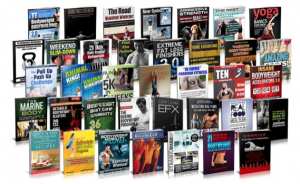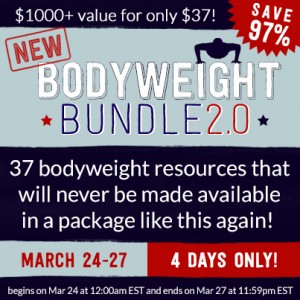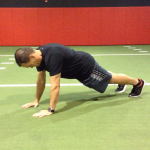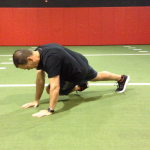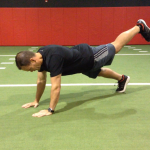Brian Schiff’s Blog
Injury Prevention, Sports Rehab & Performance Training Expert
 As a father, coach and physical therapist working in a sports medicine environment, I am all too familiar with youth injuries. While we can not prevent every injury, I do believe we need to do everything possible to keep our young athletes out of harm’s way. In today’s ultra competitive society, parents are faced with pressure to “keep up” or fall behind.
As a father, coach and physical therapist working in a sports medicine environment, I am all too familiar with youth injuries. While we can not prevent every injury, I do believe we need to do everything possible to keep our young athletes out of harm’s way. In today’s ultra competitive society, parents are faced with pressure to “keep up” or fall behind.
Contrary to what research and real life has to say about it, organizations and coaches who want to win now tell parents and players you need to choose one sport at an early age if you want to be the best. I see the club fees that organizations charge, the emotional heartbreak of not making the top tier teams and the grind of all the “extra” training sessions for skill work, speed training, etc. that athletes endure.
Gone are the days where just playing for your school team is enough to garner attention at the next level. It seems as if athletes must play in AAU, clubs, travel teams or showcase opportunities to stand out. It is apparent to me as if we have become hyper focused on training our children to obtain a scholarship at such an early age. Some of the things I hear parents say illustrate to me their are pushing their children very hard to meet these expectations. The idea that sports should be fun for young kids seems to be lost on the coaches and parents in many cases.
My 9 y/o son (picture above running the ball) told me one reason he does not want to play Pop Warner football next Fall is because of all the practice time required. We practiced 5 days per week in August, followed by two hour practices 3 nights per week and a Saturday game during the regular season. He loves the game and was one of the best players on his team, but the time and exhaustive training simply wore him out. So, he says he wants to play soccer next Fall instead. I told him this was fine as he needs to be the one that wants to play – not me telling him to play. He also plays basketball in the Winter and soccer in the Spring.
As a parent, I want to encourage others to listen to their kids and put their own goals and interests aside. We should not try to live vicariously through our kids on the court or field. Sports should not be work for young people, and adults should not care more about the game than the participants at a young age. As coaches and medical professionals, we need to do everything in our power to promote health and life balance for young people.
If you follow my blog, you may remember that about this time last year I posted some info about a compilation of body weight training resources. Well, a new version is back for 2015, and as a person who contributed to the project, I wanted to make you aware of the offering. It is available from today until March 27 at 11:59 PM and includes content from different disciplines within the health and fitness community.
Get the NEW Bodyweight Bundle 2.0 bundle here
It includes:
8 Bodyweight muscle building resources
6 Bodyweight fatloss programs
6 Bodyweight “trick” manuals
7 Bodyweight video/workout programs
4 Bodyweight flexibility/rehab programs (including my shoulder e-book)
Plus…
… fat-burning recipes, meal plans and more.
You can harness the power of bodyweight exercises from multiple experts to transform your body and your life. You can own all 37 resources for only $37 for a limited time! Click on the image below for more information.

Halo Trainer
I recently received a Halo Trainer from Bryce Taylor, its inventor and program director. I am fortunate enough to test and sample many new products related to fitness and rehab. Many of them are one dimensional, full of fluff or new takes on an old product. This product really delivers for those in the rehab and fitness worlds.
Disclaimer: I am not being compensated for this product review or paid to endorse this product. I simply love what it has to offer. The Halo Trainer offers countless training possibilities for so many people despite their backgrounds and abilities.
In fact, here is an excerpt from the Halo Trainer website:
Halo Training currently consists of 4 levels of difficulty for functional bodyweight training. We all know that people have various levels of strength, flexibility, coordination, etc. so we at Halo Rehab & Fitness believe that individuals should not be performing the same exercises. Although it is always to goal to increase the challenge, it is not always appropriate. Sometimes an exercise can be advanced and other times an exercise needs to be made a little easier to meet the specific level of the individual.
For this reason, the Halo training development team has created four distinct levels of difficulty based on scientific principles. Our team has created levels of difficulty for over 300 exercises so that you can create a specific progressive individualized program to maximize bodyweight training. Just pick a starting level and progress to the next level when you are able to complete the challenges of your current level.
Increasing shoulder, torso and hip strength and stability is a common training goal for athletes involved in sport. Facilitating hip disassociation and kinetic chain linking with exercise is always a plus. I like to use a diagonal mountain climber with hip extension to accomplish these objectives. More specifically, I utilize this exercise with my overhead athletes and anyone involved in cutting, pivoting and rotational sports.
Begin in a tall plank position. The hands should be beneath the shoulders with the feet on the floor and shoulder width apart. Slowly bring the left knee/hip under the body and toward the right elbow. Pause at the end point prior to losing form or control.
Next, return the left leg toward the start position and up into full hip extension in one continuous movement. Pause at the top end of available hip extension and repeat the cycle for 10 repetitions or time on the same leg. Alternate legs and perform 2-3 sets on each side.
Sufficient upper body strength and core/hip stability in a 3 point position is necessary to perform the exercise correctly. At no time should the foot of the moving leg touch the floor or be used to balance the body. As far as a pace, I feel using a 1/1/1/1 cadence works best.
This exercise is an excellent way to promote shoulder, core and hip stability while facilitating hip disassociation as well. Driving the hip back up into extension will activate the gluteals and simultaneously force the stable (fixed) hip to stabilize the pelvis and counterbalance the movement pattern. In addition, the client will have to effectively activate the hip and abdominal musculature throughout to avoid unwanted pelvic tilt/rotation during the movement.
Click here to view the full video of this exercise I did for my ‘Functionally Fit’ column for PFP Magazine.
Lateral quickness is an important part of athletic development. Having the ability to effectively decelerate and and then re-accelerate the other way is critical for success in field and court sports. Incorporating such movements as part of a multi-directional speed training plan will pay dividends for athletes. In this video I demonstrate how to use the BOSU Elite Balance Trainer to improve lateral speed and quickness.
This exercise is an excellent way to increase lateral foot speed and quickness. In addition, it allows you to introduce energy system training, improve proprioception and enhance dynamic lower limb stability. It is also a great way to train body control and deceleration – two key things necessary for injury prevention in jumping and cutting athletes. Athletes may tend to stand upright once they come back down to the ground, so coaching and cuing them to stay low and not allow their shoulders to move outside the outside leg may be necessary.
You can read more about this exercise in my upcoming column Functionally Fit at www.fit-pro.com.

